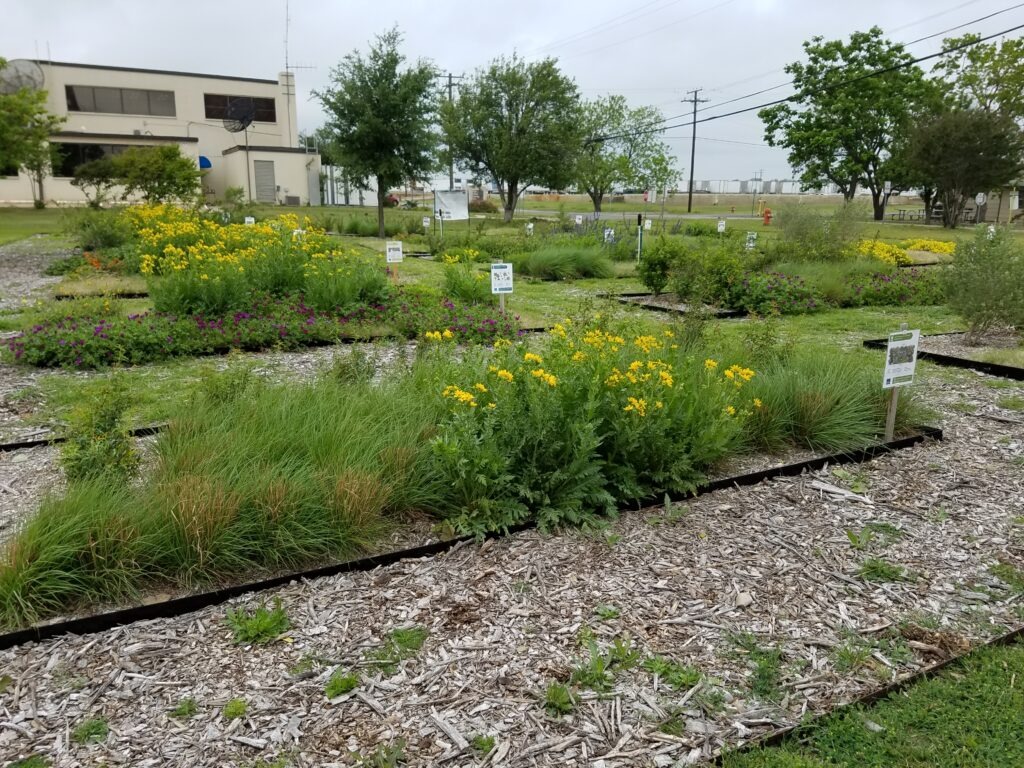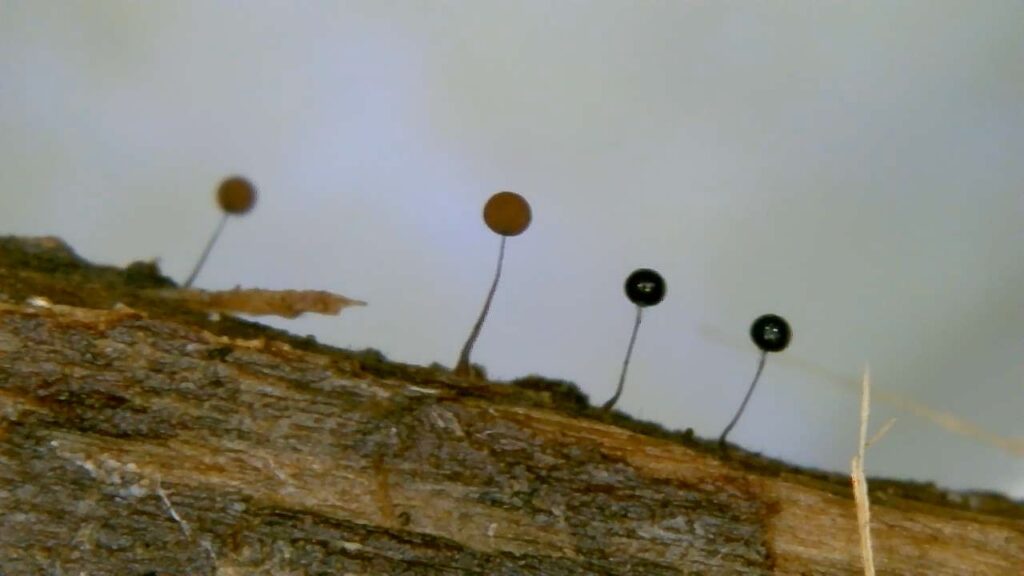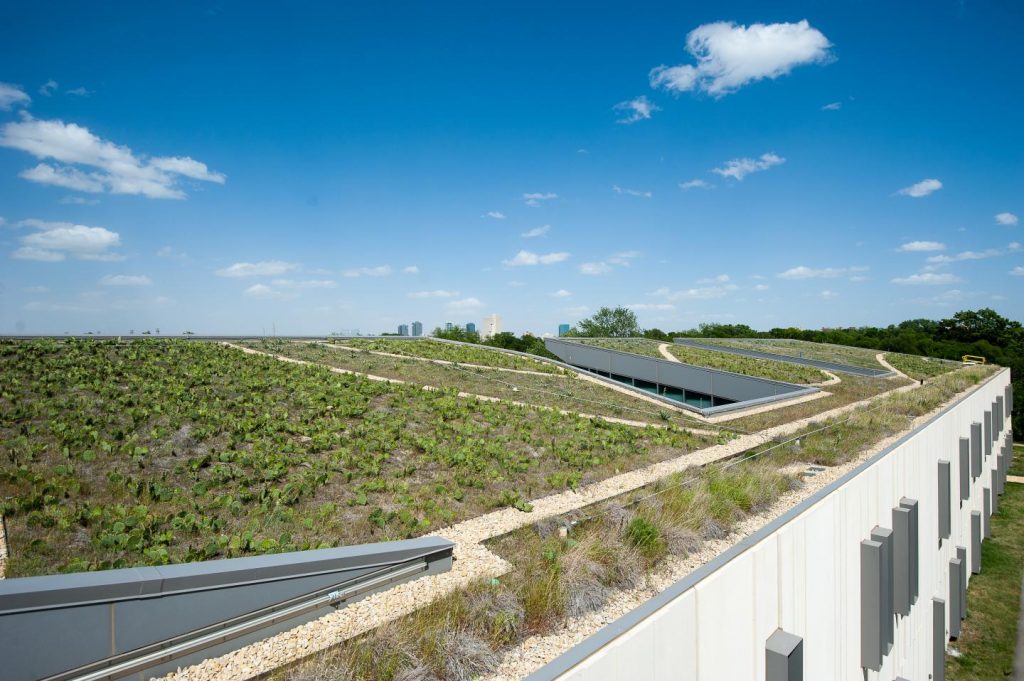Background
[missing photo]
Lawn irrigation consumes 30% of municipal freshwater in the eastern U.S. and up to 60% in the west. Lawns are now the most irrigated crop in the U.S., covering three times as much area as any other irrigated crop – an area roughly the size of Texas. To reduce freshwater use, we need to start transitioning the way we landscape to be much more sustainable, and use more native plants.
An extremely important aspect of a sustainable landscape is ecosystem services – the goods and services provided by ecosystems that sustain and fulfill human life. Ecosystem services provided by a sustainable, high efficiency landscapes include climate regulation, carbon sequestration, air and water cleansing, storm water mitigation, freshwater storage, urban habitat for animals, and a relaxing green space for people. Historically, we have depended upon natural areas outside of our cities to provide these services. However, due to population growth, increased development, and the human migration from rural to urban areas, it is becoming increasingly important that our urban landscapes accomplish more. Similar to high performance buildings that are acknowledged through programs such as LEED, we can also develop high performance landscapes that reduce resource use and increase the provision of ecosystem services.
One goal is to have the benefits of our landscape out-weigh the costs. For example, manicured lawns can act as carbon sinks and help mitigate climate change, but the carbon sequestration potential is greatly reduced by the carbon emissions of typical maintenance practices. For this project, benefits and costs will be determined through an in-depth literature review and on-the-ground research at BRIT and the Fort Worth Federal Center which is at the intersection of Felix Street and Hemphill. Research findings will result in a series of landscape recommendations and the development of a high performance landscape evaluation tool.
Goals of the Project
[missing photo]
At this point, very little is known about how site-scale design and management choices affect ecosystem services. The GSA/BRIT research project aimed to address this gap in knowledge by determining the ecological outcomes associated with various landscape design & management choices.
Our research plots were designed to help us better understand the effects of these decisions. In particular, our goal was to determine the relationships between landscape “inputs” and the resulting ecosystem service “outputs.” We focused on three ecological variables that are especially relevant in urban sites:
- Water volume required for irrigationa. Design choices: inclusion of native plants that thrive in dry soils, increased organic matter in the soil with compost amendments, and reduced compaction during installation and maintenance.
- Benefits to native pollinatorsa. Design choices: inclusion of high-value nectar plants that are native to the ecoregion, expanded total time during which plants in the landscape are in bloom, and increased number of native plant species.
- Net carbon footprinta. Design choices: the “embodied carbon” associated with different materials used on the landscape for maintenance, the greenhouse gas emissions associated with different maintenance equipment, and designed landscapes’ ability to store and sequester carbon in soils and plant biomass.
In addition to these ecological variables, we also considered the aesthetic appeal of the plot designs and soil health.
Methods of the Project
Our on-the-ground research consisted of 40 research plots: 20 at each of two sites in Fort Worth, Texas.

The first site was the Fort Worth Federal Center on Felix Street – a large GSA site with many federal tenants. At this site, the research focus was the relationship between landscaping decisions and pollinator abundance. These plots varied by the percent cover of high value pollinator plants, total bloom time, and design aesthetic. They were planted with all low water use plants native to Texas and commonly available in the landscaping trade.

The second research site was at the Botanical Research Institute of Texas (BRIT), connected to the Fort Worth Botanic Garden in the heart of Fort Worth’s cultural district. At BRIT, the 20 plots were in the parking lot situated at the end of bioswales. At this site, the research focus was the relationships between landscaping decisions and water use. These plots varied by the percent organic matter in the soil, water use level of plants, and design aesthetic. They were all planted with plants native to Texas and commonly available in the landscaping trade, except for two commonly used non-native turf grasses, which were chosen in order to compare their water use to that of native turf and non-turf plants.
For two years we collected data in the plots at both sites on: water use to maintain aesthetic appearance of the landscape, pollinator abundance, diversity, and visitation rates, time spent on maintenance (including use of gas-powered equipment), plant characteristics, and soil health.
Pollinator observations were conducted at both sites every other month between March and September. After an establishment period for the plants, water use of each plot was monitored and manipulated for two years through water limitations and plant stress observations. Maintenance and soil compaction data were also be collected.
Impact of the Project
The ultimate goal of this project was to develop a preliminary version of a landscape assessment tool that helps users evaluate the environmental implications of their design and management choices. This tool should allow users to input details about their anticipated choices in the landscape and get a summary of expected outcomes. For example, a user could see the estimated volume of water savings that would come from different surface area coverage of lawn versus native plant species or the number of pollinators that might visit the landscape depending on plant choices. The user could also see the estimated change in carbon footprint associated with their expected maintenance practices, anticipated watering schedule, or choices in soil amendments.
The data we collected will help inform the equations and values underlying the calculator. In the end, we hope this tool will be useful to landscape architects, designers, maintenance/operations directors, even home-owners…. Anyone with a designed landscape who wants to improve performance.
 [missing photo]
[missing photo]







